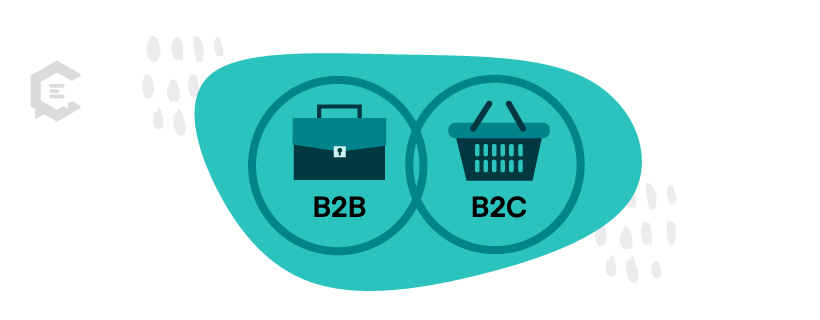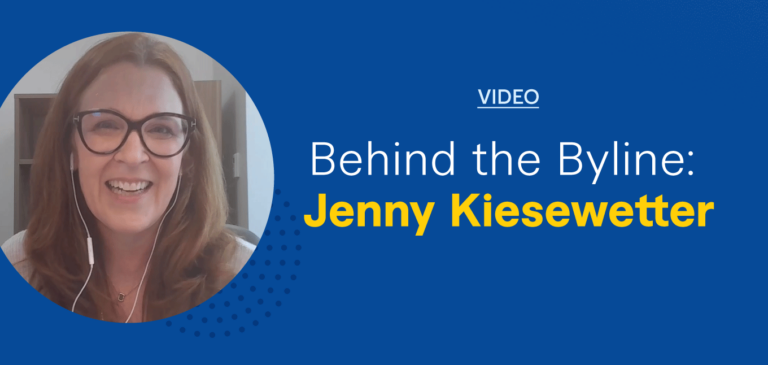It has been said that B2B content is designed to appeal to the head, while B2C content appeals to the heart.
If B2B content helps companies make informed decisions, it must consist of solid facts and statistics. Likewise, if B2C content is meant to motivate consumers to make impulse purchases, it must use emotional language, right?
Well… not quite.
A successful content strategy depends more on how well you know your target audience, where you publish your content and the type of content you produce. That is true for both B2B and B2C.
Let’s take a closer look at B2B vs. B2C content and the best marketing strategies to use with both.
What is B2B content?
B2B content, or business-to-business content, includes any content aimed at people responsible for deciding what products or services to use in their business. B2B content tends to offer facts on the reliability and cost-effectiveness of a product or service in order to help B2B buyers commit to a sale.
It’s important to realize B2B buyers are still people driven by an emotional need to do well at their job. Conveying a message of trust to your target audience is essential when developing an effective B2B content strategy.
What is B2C content?
B2C content, or business-to-consumer content, promotes products or services that fulfill consumer needs. This type of content marketing requires you to understand your target audience’s personal desires, purchasing habits, and online behavior to create content that resonates with them.
Although B2C content focuses largely on the emotional satisfaction of having a product or service, not all B2C content strategies limit themselves to emotional appeals. For instance, offering facts on the reliability and guarantees offered by an auto repair shop can make a buyer feel more informed and confident, influencing their decision.
Best practices for B2B content strategy
Effective B2B marketers position themselves as thought leaders in their industry. This motivates decision-makers and buyers to turn to their content when purchasing a product or service for their business.
You can do this by publishing your content in reputable forms, such as:
- Blogs: Blog posts keep your clientele up to date about your business and the overall industry at large, allowing you to build yourself as a trustworthy brand.
- Infographics: Charts and diagrams offer visual representations of information or data that inform business decisions. Limit written copy to key facts or statistics, allowing readers to comprehend the information at a glance.
- White papers: Long-form reports or guides that provide factual evidence on the benefits and features of a product or service are commonly used in B2B marketing to develop authority in the space. These documents are longer than a typical blog post and are designed to influence customer or investor decisions.
- eBooks: Longer than blogs and white papers, eBooks are excellent for educating new leads about your product or service and can be supplemented by infographics, illustrations, tables, and other visual aids.
It’s important to understand that a B2B purchasing journey takes longer than a B2C one. B2B buyers need to consider multiple options when choosing a product or service. In addition, they need to present their findings to multiple people, including the CEO, CFO, or production manager. This means your B2B content needs to nurture relationships with potential clients so you can achieve a successful sale.
Social media strategy for B2B content
When promoting your B2B content, LinkedIn is particularly helpful for attracting new leads and building your company’s brand as a trustworthy source of valuable information. LinkedIn offers a sponsored content feature that allows your content to appear on the news feeds of users whose online behavior shows an interest in your industry, product, or service. You can also use LinkedIn’s Direct Sponsored Content to create variations of your B2B ads to see how your target audience responds to different types of text, images, or calls to action.
Best practices for B2C content strategy
B2C content strategy often focuses more on a consumer’s wants than their needs. Showcasing your industry knowledge isn’t as important as making your target audience feel safe, well-informed, and secure in their purchasing choices.
Effective B2C content is often conveyed in these forms:
- Blogs: Blog posts allow you to address your B2C customers’ pain points and mention your product or service as a potential solution. Unlike B2B blogs, B2C blogs focus less on your industry and more on specific issues your customers are facing.
- Social Media Posts: Promoting your products or services on social media posts and ads is an effective B2C content strategy. It’s also a good idea to respond to all of your comments to establish better relationships with potential customers.
- Online Videos: Not all B2C content needs to be written. YouTube and TikTok allow you to connect with potential customers through online videos that address their problems and promote your products or services.
Social media strategy for B2C content
Knowing what social media your customers consume influences what type of content you produce. For instance, B2C content on TikTok and Instagram lends itself to eye-catching graphics and short videos to capture attention and fuel impulse purchases. If you are lucky, one of your videos could go viral and have a big impact on your brand awareness.
Building B2B and B2C Customer Personas
Creating effective B2B or B2C content strategies depends mainly on building accurate customer personas of your B2B or B2C buyers. This is a depiction of your ideal customer that considers their purchasing motivations, brand loyalties, pain points, online behavior, and buying power. Understanding your customers helps shape the B2B or B2C content you need to reach them.
When building your B2B customer persona, consider the following:
- Is your target B2B buyer a junior or senior decision-maker?
- What is important to them in a supplier? Cost? Customer support?
- How do they prefer to interact with B2B companies? Face-to-face? Email?
- What business-related goals are your buyers seeking to accomplish with your product or service?
- What other brands are they using? How are these brands not meeting their needs?
Likewise, when creating your B2C customer persona, ask yourself the following questions:
- How old is your ideal customer?
- Is your target audience primarily male or female?
- Where do they live?
- How do they earn their living?
- What emotional needs will your product or service satisfy?
Social media allows you to refine your customer personas. For instance, Instagram allows you to conduct polls and offer questionnaires in its “stories” feature. You can use this to gather information on your viewers’ needs and purchasing behavior, creating a more accurate picture of your B2C and B2B customers.
Moving forward
Building an effective B2B or B2C content strategy requires having a clear understanding of your buyers’ needs and motivations. You’ll need to know what type of content resonates best with your audience and where to publish your content so that it attracts the most leads.
Working with seasoned writers and editors can help you develop the type of B2C or B2B content you need and the ideal content strategy for your business. ClearVoice gives you access to a talent network of over 4,000 writers, editors, designers, and more that specialize in more than 200 business categories. Get started with ClearVoice today and start working with professionals who can develop your B2C or B2B content strategy.







